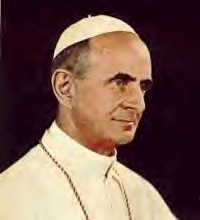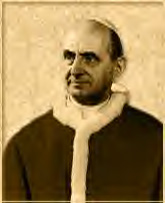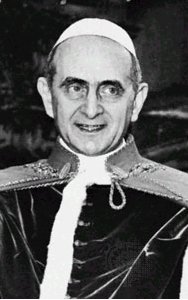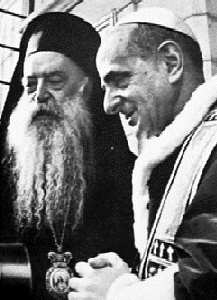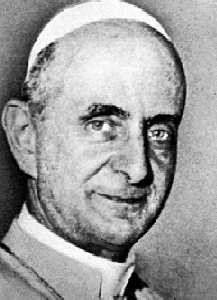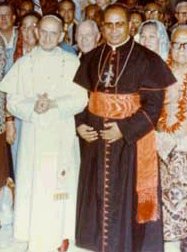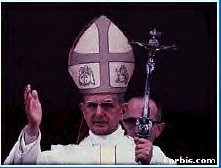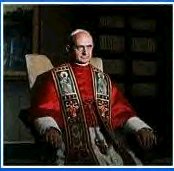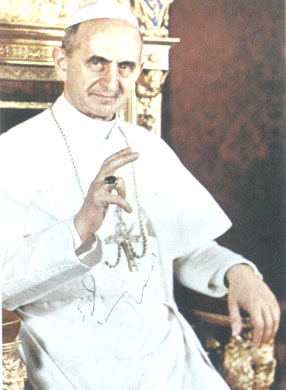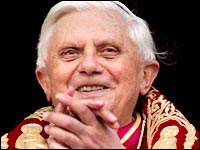|
3-31-05 - 1:44 A.M. - DREAM - I was working in a big office. The boss came in, a man I never met before, he was wearing a dark suit. I don't recall the color of his shirt and tie, but he was slightly overweight and looked powerful. (He reminded me of someone from the Sicilian/Italian Mafioso) He wanted me to be a salesman and call people on the phone to sell is products. I didn't want to cold-call out of the phone book. I wanted to call family, friends and previous customers. I didn't see a rolodex on the desk, but there was a small black telephone notebook there I could get some numbers from. I didn't have any paper to write on or a notebook, so I went to the supplies cabinet and found some grid drawing graph paper, so I took 3 pads of that back to my desk. I was about to start copying phone numbers onto the paper when a fire alarm went off and several large firemen, dressed in full black fireman uniforms, helmets, boots and equipment came rushing into the room and told me to get out. I didn't see any fire or smoke, but I grabbed the telephone book, the 3 pads of paper and a pen and ran for the door. I was stopped at the door by a powerful looking woman, who seemed like she was the bosses wife. She didn't want me to take the grid graph paper out of the office, so I had to explain to her why I needed it and why I had taken it. I guess I sold her on the idea and she let me pass and leave the office with it. Now that I was out in the hallway, I started to see smoke, though I didn't smell it yet. I started meeting women with infants along the way who were waiting for someone and who didn't heed the warning alarm bell. Since it didn't seem they could see the smoke in the hallway like I could, I had to insist that they leave the building too and started herding the women and their children ahead of me. Now too, I was selling the idea that it was best to go to a safe place and than stay and take a chance on dying from the smoke. The smoke was the warning sign that a fire was going on somewhere nearby.
|
||||||||||||||||||
|
SATAN'S SMOKE
|
||||||||||||||||||
Rev. S.O. Park says: "Devils are real!When people stop invoking the saints, they soon turn to Devils. Nudity, fortune-telling, psychics, divination, nature-worship, abortion, animal and human sacrifice, obsession with sex and soft living _ all these and more are clear signs of the demonic. We are witnessing a veritable explosion of the demonic all around us. There is nothing that has not been touched and tainted by the demonic. John Baptist Montini, aka "Pope Paul VI" appeared to "lament" the presence of Satan in the Church. He complained: "The smoke of Satan has entered the Church." While he was the one responsible for this "smoke of Satan" entering the Church, most Catholics failed to see the connection. Instead, they predictably concluded that "Paul VI" could not be involved in such a heinous deed since he himself has lamented the entrance of Satan into the Church! Excerpted from: http://friarsminor.org/xx1-16.html "In
1972 Pope Paul VI said, 'Satan's smoke has made its way into the temple
of God...' Now, as we enter the third millennium, it is no longer
'smoke' but a raging fire. Catholicism is in the throes of the worst
crisis in its entire history. Unless
true and loyal Catholics have the zeal and the spirit of the early
Christians, unless they are willing to do what they did and to pay the
price that they did, the days of America are numbered." The Reasons for Satan's Smoke Analyzed "Go forward, My child, now, and bring this message to the world: satan has entered into the House of God. He rules now from the highest places. The world and the Church of God is in deep darkness. Those who are in command—many have fallen away. Pray, My children, much, for with your prayers and sacrifices they, too, can be recovered.” - Our Lady, April 13, 1974
Pope Paul VI
Pope Paul Seen In Trouble
- Prayers Asked
http://www.saintmarys.edu/~incandel/PP/240/Class5/ppframe.htm
In the photographs taken of Pope Paul VI, one might think that the differences are just because of aging, but that is not the case. The later photos show a Pope with a more hooked nose, of a different shape, more rounded, from the earlier Pope. The ear shapes are completely different, including the size of the lobes. The jaw of the earlier Pope is much more prominent than the later Pope.
The later Pope is thought to be an Italian Actor, who had plastic surgery
to make him look like the Pope, supposedly arranged by Cardinals Villot,
Benelli and Casaroli. These three men made sure that few people got close
to the new Pope, who was being kept hostage, drugged and bound to his
chair. One of the duties of the imposter Pope was to present new encyclicals which put the Catholic Church in bad standing. The real Pope endured as a hostage until he finally died in 1978. Meanwhile the false Pope installed Benelli to a Cardinal in 1977 so he would have a chance at becoming Pope himself. He aligned himself with communist and Masonic forces to become a likely candidate to antipope. Once it became clear that Benelli would not become Pope, he arranged it so Albino Luciani would be elected Pope John Paul I. As you will see below, Pope John Paul I was murdered with 1 month of his election to Pope. Luciani was naive to politics and was vocal with announcing his intention to continue the reforms of his predecessors. He was in good health. Everyone was shocked when he died of an apparent heart attack 34 days later. What was more unusual, 4 other people died of apparent heart attacks within that same 4 weeks of his papacy. Benelli fell short of the 75 votes needed to be elected the new Pope and after Cardinal Giovanni Benelli’s candidacy stalled, the electors decided they would look outside Italy, and König suggested a man from behind the Iron Curtain. and unexpectedly Carlinda Karol Wojtyla of Poland was elected. What was strange was that Villot, Benelli, and Casaroli were selected by the new Pope to run important departments within the Vatican. Since they worked so closely with the new Pope, the communists felt assured they had a victory even though Benelli didn't become Pope. In 1981 when Pope Paul II was gunned down in the streets, the communists were even more sure they were victorious, but miraculously, the Pope overcame his dire injuries. There were several other attempts on his life, but he escaped with his life intact.
Much time has passed since then. Villot died in a car accident on March
9, 1979. Casaroli died on June 10, 1998. According to Kathleen Keating
in her book, "The Final Warning", Benelli is still alive but quite old now,
however, reputable websites say that Cardinal Benelli died in 1982. (Cardinalate.
Created cardinal priest, June 27, 1977; received red biretta and title of
S. Prisca, June 27, 1977. Attended IV Ordinary Assembly of World Synod of
Bishops, Vatican City, September 30-October 29, 1977. Participated in conclave
of August 25-26, 1978. Participated in conclave of October 14-16, 1978. Attended
I Plenary Assembly of Sacred College of Cardinals, Vatican City, November
5-9, 1979; V Ordinary Assembly of World Synod of Bishops, Vatican City, September
26-October 25, 1980. Death. October 26, 1982, Florence. Buried, metropolitan
cathedral basilica S. Maria del Fiore, Florence.
.http://www.fiu.edu/~mirandas/bios-b.htm
It is critical to remember that this will be the first conclave of the third millennium. That fact alone will impose tremendous psychological pressure on the electors to be forward looking, choosing a man who embodies the church of the future. That means the developing world, where seventy percent of Catholics today live - and the only place where the church is experiencing significant growth. This could mean an African such as Nigerian Cardinal Francis Arinze, but for men accustomed to “thinking in centuries,” the African church (below the Sahara) probably seems far too new, too fluid to be ready for the papacy. There aren’t enough Catholics in Asia for that region to make sense. Thus if the cardinals want a Third World pope, it seems more likely they will turn to a Latin American. The Cardinals and the Conclaves to Elect the New Pope
The Murder of Pope John Paul 1 ........At 4.30 a.m. on the morning of Fri September 29th , 1978 Sister Vincenza carried a flask of coffee to the study..... At 4.45 am she returned. The tray of coffee in the study was untouched.....she moved to the bedroom door and listened. There was no sound. She knocked on the door, timidly at first, then with greater force. Still there was silence. There was a light shining from under the door of the bedroom. She knocked again on the bedroom door. Still there was no answer. Opening the door she saw Albino Luciani sitting up in bed. He was wearing his glasses and gripped in his hands were some sheets of paper. His head was turned to the right and the lips were parted showing his teeth. It was not the smiling face that had so impressed the millions but an expression of agony. She felt his pulse.. Recently she recounted that moment: "It was a miracle that I survived. I have a bad heart. I pushed the bell to summon the secretaries, then I went out to find the other sisters and to awaken Don Diego." .....after a mere 33 days as Pope, Albino Luciani had died alone... Less than twelve hours earlier Albino Luciani had told Villot of his impending replacement by Benelli. Now, far from being a former Secretary of State the Pope's death..... ensured he would remain in office...... Beside the Pope's bed on a small table was the medicine that Luciani had been taking for low blood pressure. Villot pocketed the medicine and removed the notes on the Papal transfers and appointments from the dead Pope's hands. They followed the medicine into Villot's pocket. From his study desk his last Will was removed. Also to vanish from the bedroom were the Pope's glasses and slippers. None of these items has ever been seen again..... All the hopes, dreams, aspirations were shattered. The plans Luciani had made, the changes, the new direction, all had come to nothing..... Cardinal Benelli.. With tears still running down his face... said: "The church has lost the right man for the right moment. We are very distressed. We are left frightened....." [David Yallop In God's Name Johnathan Cape London 1984] The Assassination of Pope John Paul IAlbino Cardinal Luciani was, in fact, elected Pope by the “Senate”, i.e. the College of Cardinals, on August 26, 1978, soon after the completion of archaeological excavations around the supposed tomb of St. Peter. Scarcely more than a month later, on September 28, 1978, the new Pontiff died in his bed under circumstances that strongly suggested poisoning. And while the Italian authorities demanded an autopsy, twelve Cardinals of the Vatican Curia ― led by Cardinal Villot, who assumed the Papal powers pending a new election ― steadfastly blocked all inquiries: NOSTRADAMUS He who will assume the powers of the Pope To understand the forces at work in the sudden death of Pope John Paul I in 1978 , we should first back up a bit in time to the 19th Century, when the Church was stripped of its sovereign power in the Papal States by the Italian national revolution. As a result, after 1870 the Pope became the pathetic “Prisoner of the Vatican” ― a “prisoner” who was, however, forever intriguing to restore his lost domains. Perhaps to compensate for the loss of his earthly kingdom, Pope Pius IX (1846-1878) convoked Vatican Council I with the purpose of proclaiming his doctrine of “Papal Infallibility”, which would replace the temporal tyranny of the defunct Vatican monarchy with the spiritual tyranny of the “Infallible See”. Quite tragically, this turn toward authoritarian and revanchist politics on the part of the Church was to play no small part in the onset of fascism in the early 20th Century. For his despicable role in delivering the Italian nation into the bloody hands of Benito Mussolini, Pope Pius XI (1922-1939) received considerably more than Iscariot’s thirty pieces of silver. In exchange for propping up the faltering Fascist regime, the Vatican got the equivalent of $80 million ($775 million in today’s dollars) and restoration of its sovereignty in Vatican City under the terms of the Lateran Treaty of 1929. Thus had the Papacy evolved from the avaricious harlot of the Caesars to the contemptible whore of “Il Duce”. Pius and his successors would exploit this latter-day “Donation of Constantine” to create a “Vatican Bank”, effectively beyond the reach of any regulation by secular authorities, and hence uniquely suited to the nefarious work of tax evasion and money laundering in which it later became enmeshed. By 1958 Pope John XXIII would inherit the helm of a sovereign power which was as monolithic and mindlessly dogmatic as Stalin’s Comintern. Under the totalitarian doctrine laid down by Vatican Council I, any deviation from the Pope’s moral teaching was, by definition, “error” ― and expressions of “error” were not to be granted the privilege of toleration. Sacrificing his own health in the process, John XXIII struggled mightily to pull together the reformist Vatican Council II in the face of fierce opposition by conservatives, who feared that any relaxation of papal absolutism would undermine the entire Vatican edifice. To some degree, the conservatives proved right, for the free thought which Vatican Council II had encouraged did not stop with the Council’s largely symbolic reforms of the Catholic liturgy, but proceeded on to challenge the entire worldly edifice of power and wealth which the modern Church hierarchy had erected. After the death of John XXIII in 1963, the deadlock between conservatives and reformers in the College of Cardinals resulted in the election of a vacillating “Hamlet” in Pope Paul VI, who would agonize for five years over the question of the morality of artificial birth control. During this time, Paul would be subjected to immense pressure from the old guard in the Vatican=s governing body, which is called the “Curia”. No sooner had John XXIII died, but the Curia began battling to turn back the liberalizing tide of his Vatican Council II and return the Church to its sexually repressive, authoritarian mold. In the course of his soul-searching, Paul VI called upon the advice of the gentle, scholarly Cardinal of Venice, Albino Luciani, who provided the Pontiff with a compelling theological argument for the Church’s honorable retreat from its fatuous incursion into the boudoirs of its faithful. When his irresolute Pontiff ultimately bowed to the relentless lobbying campaign of the conservatives and opted to ignore Luciani’s learned thesis, the Cardinal’s sense of honor and loyalty would not permit him to join in the chorus of derision which greeted the release of Paul’s Humanae Vitae in July 1968. Ironically, this principled refusal to openly criticize the Papacy’s anti-contraception crusade led to the false perception of Albino Luciani as a conservative among the Cardinal electors who convened after the death of Paul VI in August of 1978. When the conclave assembled in the wake of Paul’s death, it was deeply divided between those who sought to move forward with the reformist agenda of Vatican Council II, on one side, and those who yearned for a return to the comforting certainty of the rigid dogma they had known before Pope John XXIII. As fate would have it, the conservatives’ prospects of electing their candidate had been considerably dimmed by an amendment to the electoral procedure, enacted by Paul VI, which disenfranchised those Cardinals over 80 years of age. Unable to install one of their own as Pope, the conservatives at the conclave resorted to a strategy of blocking the election of the leading progressive candidate and hoping that an acceptable “dark horse” candidate would emerge from the deadlock. Cardinal Luciani’s simple, self-effacing demeanor, and his apparent readiness to subordinate his own viewpoints in obedience to higher authority, as evidenced by his response to Humanae Vitae, made him appeal to the conservative Curia as a perfect compromise candidate. Luciani, they believed, would make a pope who they could effectively control. Once elected, however, the new Pope began to display the brilliant mind and puckish charisma which had been concealed behind his former reticent reserve. Not awed in the least by his exalted station, John Paul I immediately threw himself into an all-out effort to revolutionize the Papacy: to return it to its spiritual origins, to the message of the Gospels. At his coronation, he refused to be carried on the papal sedan chair sedia gestatoria or to wear the jewel-encrusted tiara. He instructed the Curia’s Secretary of State not to invite the leaders of the military juntas in Argentina, Chile and Paraguay to his inaugural Mass. He refused to follow the scripts prepared for him by the Curia at his audiences and press conferences, where he was emphatic in announcing that his pontificate would see to the withdrawal of the Church from its involvement in “purely temporal ... and political affairs”. Totally exasperated by the new Pontiff’s unexpected independence, the Curia actually began to censor the Pope=s ex tempora remarks from the Vatican’s daily newspaper, particularly when he began to express his views on contraception and his willingness to reverse the proscriptive stance of Humanae Vitae. While Albino Luciani proved to be an irritant to the Curia in many ways, he made himself their absolute nemesis when he began to delve into the Vatican Bank’s insidious dealings, which dated back to the reign of his predecessor. In 1968, the same year in which he had hung the albatross of Humanae Vitae around the Church’s neck, Pope Paul VI had taken into his confidence a flamboyant Sicilian financier named Michele Sindona. Sindona’s spectacular rise from veritable rags to control of a vast international banking empire was due, in part, to an extraordinary business instinct and mental acumen combined with a mesmerizing charm. But, despite his considerable natural gifts, Sindona would never have vaulted from the teeming streets of Messina to the board rooms of Milan without the support of his patrons in the Mafia and in “P2”, a secret Masonic society controlled by one Licio Gelli. Gelli, the secret society’s “Grand Master”, had assembled a network of far-right-wing military and political figures that functioned as a “state within a state” in Italy and several Latin American countries. Relying on bribery, extortion, and, when necessary, assassination and terrorism to expand his web of power, Gelli financed his empire through the systematic plunder of a growing string of banks acquired by his associate Roberto Calvi. With the “help” of Gelli and Calvi, Sindona gained control of a group of some of the oldest and most prestigious financial institutions in Italy and Switzerland, including several banks in which the Vatican held an interest. Nicknamed the “Shark”, Sindona almost overnight became the toast of the international banking community and the subject of adoring accolades by Fortune and Time magazines. He quickly earned the reputation of taking over venerable but failing banking houses and miraculously turning them around ― not only into the black, but literally into cash cornucopias. When his house of cards finally collapsed in 1974, in what became known in Italy as “Il Crack Sindona”, prosecutors soon discovered the secret of the Shark’s “magic touch” ― massive infusions of drug money from the Gambino family which Sindona’s banks assiduously “laundered”. In order to pay back his P2 patrons Gelli and Calvi, moreover, the Shark had embezzled hundreds of millions of dollars from the banks he controlled. Soon after his financial debacle, Sindona fled to the U.S., where he felt he could rely on the protection of his old friend, then-President Richard Nixon. Unfortunately for the Shark, the Watergate scandal forced Nixon’s resignation in August 1974. “Coincidentally” within weeks thereafter Federal auditors discovered a huge “hole” in the assets of Franklin National Bank, which was part of the Sindona empire. Indicted in both the U.S. and Italy for bank fraud and embezzlement, Michele Sindona would later order the contract killing of a key prosecution witness, for whose murder an Italian court ultimately convicted him in 1986. This was the man to whom Paul VI turned for financial advice in 1968 when the government in Rome abolished the Vatican’s tax exemption for income from Italian investments. Fearing embarrassment from the public disclosure of the enormity of its financial portfolio which tax filings would reveal, the Vatican opted to divest most of its domestic assets ― preferably at an attractive price. An attractive price ― actually double the market value of the Vatican’s portfolio ― is exactly what the Shark had to offer, since his patrons in the Gambino family were more than willingly to exchange the “dirty” proceeds of their heroin trade for “clean” assets at a two-to-one rate. Of course, the Holy See was not expected to deal directly with the Mafia Dons whose blood money they would receive. Instead, the Shark would set up a shell corporation for the single task of acting as the conduit for the Gambino money ― a corporation he would name Mabusi, an acronym composed of the first two letters from the first, middle and last names of his son Marco. With his extraordinary mind and innocent fearlessness, Pope John Paul I was able to penetrate to the heart of this shameful labyrinth of corruption and to identify Sindona’s key accomplices inside the Vatican within weeks of his coronation. On the evening of September 28, 1978, he called Cardinal Villot, the leader of the powerful Curia, to his private study to discuss certain “changes” which the Pope proposed to make public on the following day. During the two-hour discussion that followed, Villot was to discover, to his chagrin, the true mettle of the enigmatic man he had once assessed to be a simple fool. Among those whose “resignations” would be accepted by the Pontiff the following day were Villot himself, as well as the head of the Vatican Bank and several other members of the Curia who were implicated in the activities of Sindona and P2. Moreover, Villot was told that John Paul I would also announce plans for a meeting on October 24th with an American delegation to discuss a reconsideration of the Church’s position on birth control. While the new Pope was preparing to blow the cover off of the simmering Vatican Bank scandal and sever the Holy See’s Gordian financial entwinement with the banking houses of Signores Sindona and Calvi, these latter two gentlemen were in dire need of the Vatican’s continued complicity. In the autumn of 1978, Italian bank examiners were closing in on proof of the $400 million in embezzled assets which Sindona and Calvi had spirited away either into their own pockets or to support the sinister work of their Masonic Master Gelli and his P2 lodge. The only real gap in the chain of evidence needed to send all of these gentlemen packing off to prison was in the hands of the Vatican Bank, and Papa Luciani was now poised to surrender that card to the authorities. While Sindona’s high-priced New York lawyers had successfully fought off Italy’s extradition efforts since Il Crack four years earlier, the exposure of the Shark’s Vatican dealings would have unceremoniously dispatched him from the Manhattan cocktail circuit into a Milanese lockup. Sindona’s desperation to avoid such a fate had already motivated him to put out “contracts”, through the Gambino family, on witnesses against him in the extradition proceedings, as well as on the assistant U.S. Attorney who was prosecuting the case. Accordingly, when Pope John Paul I retired to his bedroom on the evening of September 28, 1978, clutching in his hands the momentous missives which would expose the Vatican’s shameful financial flirtation with the Mafia and purge the Curia of those responsible, a number of very ruthless individuals had a great interest in seeing to it that he would never awaken to issue these directives. Among them were Signores Sindona, Calvi, and Gelli ― with the latter having the allegiance, if through no other means than blackmail, of the 120 freemasons in the Roman Curia. Indeed, the new Pope had recently received, from a disillusioned former member of P2, a list of the Curial freemasons, which included the names of Cardinal Villot and Bishop Marcinkus, the head of the Vatican Bank. His planned purge targeted many of them for transfer or forced retirement. But the purge would never come. Beyond the identifiable group within the Curia which had much to lose by the continued reign of Papa Luciani, there was a more shadowy entity which had much to gain by the premature termination of his papacy. Opus Dei was, and remains today, perhaps the most obscure yet influential “sect” within the Church. A secret society with fascist tendencies like P2, Opus Dei has followed the historical pattern of the Jesuit order in striving to recruit individuals who hold positions of power in government, business, the media, or academia. The “work of God” which these recruits are then enjoined to achieve does not involve resistance to the corruption and spiritual vacuity which characterize these worldly institutions. Rather it aims for personal advancement within these institutions as a means of expanding the power of those at the apex of the sect’s rigidly hierarchal pyramid. Seen through the prism of this cynical scheme of aggrandizement parading as “theology”, any philosophy which advocates fundamental changes in the traditional institutions of Family, Property, and the State, opposes God’s designs for mankind ― designs which include, naturally, the ever greater glory of Opus Dei itself. Given this ultra-conservative perspective, we might well expect to find Opus Dei in the front line of the Church’s assault on all forms of family-planning and population control. And in fact, the only thing higher on their agenda would be putting one of their own on the papal throne. As destiny would have it, Opus Dei was poised to achieve both of these goals by the untimely death of Pope John Paul I. In the predawn hours of September 29, 1978, the Pope’s housekeeper knocked at his bedroom door, as she always did, promptly at 4:30 a.m. Hearing no response within, she left him a cup of coffee and returned fifteen minutes later to find him still not stirring, which was totally at odds with his punctual routine. When she entered his bed chamber, she gasped to discover the Pope propped up in bed, still clutching his papers from the night before, his face contorted in the grimace of death. On the night table beside him lay an opened bottle of Effortil, a medication which the Pontiff took for his low blood pressure. Before expiring he had apparently vomited. The housekeeper immediately notified the papal chamberlain, or camerlengo, Cardinal Villot, whose first response to the news was to summon the morticians ― before verifying the death himself or calling the Vatican physician to examine the body. Villot arrived in the Pope’s room at 5:00 a.m. and quickly gathered up the crucial papers, the Effortil bottle, and several personal items which were soiled with vomit. None of these articles would ever be seen again. Although the Vatican claimed that its house physician examined the body and determined myocardial infarction to be the cause of death, no death certificate for Pope John Paul I has been made public to this day. Although Italian law requires a waiting period of at least 24 hours before a body may be embalmed, Cardinal Villot had the body of Albino Luciani prepared for burial less than 12 hours after his death. Although the Vatican refused to allow an autopsy on the basis of an alleged prohibition against it in canon law, the Italian press pointed out that an autopsy had in fact been performed on one of the Pope’s predecessors, Pius VIII. Although the conventional procedure for embalming a body requires that the blood first be drained and certain internal organs removed, not a drop of blood or a shred tissue was removed from the corpse of Papa Luciani ― and hence none were available to test for the presence of poison. After being elected as Luciani’s successor, Karol Wojtyla would honor him in name only. None of the initiatives which John Paul I had been poised to take with respect to the Vatican Bank, the freemasons in the Curia, or the revision of Humanae Vitae, would ever see the light of day under Pope John Paul II. To the contrary, soon after his election Papa Wojtyla promoted the corrupt head of the Vatican Bank. Bishop Marcinkus had, after all, well served Wojtyla’s pet cause by diverting some $100 million of laundered Mafia money to the Polish Church to help underwrite their campaign against the Communist government. With the Vatican=s continued cooperation, Sindona and Calvi extended their orgy of plunder and remained at liberty for several more years, during which time a number of potential prosecution witnesses were gunned down by contract killers. In fact, when Sindona was finally indicted in the U.S. for bank fraud in connection with the Franklin National failure, the Vatican offered to provide character testimony in his defense! As for Opus Dei, though John Paul II is not actually a member of the sect, he has often functioned indistinguishably from one. Indeed, soon after recovering from his own brush with assassination, the Pope issued an unprecedented decree granting Opus Dei official status as a “personal prelature” within the Church ― the equivalent of recognizing the sect as a “church within the Church”. And as for persevering doggedly in the policy of antagonism to contraception, abortion, homosexuality and women’s rights, the current Pope (deceased 4-2-05) is certainly all that Opus Dei could have hoped for, and more. Beyond that, Papa Wojtyla has, through his appointments to the College of Cardinals, seen to it that the electors who will chose his successor are very receptive to the ultra-conservative ideology and moral absolutism of Opus Dei. Ironically, the ominous drive of Opus Dei toward complete supremacy in Vatican City seems to face only one formidable obstacle at this point in history. Opposing them are the Jesuits, whose once-secretive organization formed the model for Opus Dei, but who have gravitated in recent decades toward the more progressive wing of the Church’s theological spectrum. The historical irony here lies in the fact that the roots of the Society of Jesus and Opus Dei are so similar. Both emerged out of a cultural background of militarized, autocratic Spanish societies: 16th Century colonialism on the one hand and Franco’s fascism on the other. Like the early Jesuit order, Opus Dei is organized under a strictly centralized, hierarchal command structure, with explicitly counter-revolutionary aims. Just as the Jesuits originally battled the Protestant Reformation, Opus Dei tenaciously fights socialism and liberal theology. Excerpted from: http://apokalypso.com/Ch1_Fall-of-Papacy.htm
In God's Name
|
||||||||||||||||||
|
THIRD SECRET EXPLAINED: PART 1 - 666 in Rome THIRD SECRET EXPLAINED: PART 2 - Satan entered the Church in 1972 THIRD SECRET EXPLAINED: PART 3 - Satan entered the highest realms of the hierarchy THIRD SECRET EXPLAINED: PART 5 - The Apocalypse /Revelations
|
||||||||||||||||||
|
OPUS DEI IN THE THE CHURCH Opus DeiThe most influential Catholic lay group during the Franco period was the controversial Opus Dei (Work of God). This group did not fit conveniently into any political category. Although it denied any political aims, its members played pivotal roles in the modernization of the economy under Franco and in the subsequent liberalization of politics and government. At the same time, they were theologically conservative, and their desire for modernization was far from radical. They believed that economic reforms would improve society to the extent that thoroughgoing political reforms would be unnecessary Opus Dei was founded in 1928 by an Aragonese priest, Jose Maria Escriva de Balaguer y Albas, and it was subsequently recognized by the Roman Catholic Church as its first secular religious institution. Although attention has been drawn primarily to its activities in Spain, it is an international body with members and associates throughout the world. Members take a vow to dedicate their professional talents to the service of God and to seek to win converts through their missionary zeal. The organization in Spain has emphasized professional excellence, and it has expected its members to serve in important government positions During the late 1950s and the 1960s, Opus Dei members came to control the economic ministries, and they occupied other important cabinet posts as well. This was in keeping with the organization's aim of influencing the development of society indirectly. Opus Dei recruited its members from among the brightest students, which encouraged a sense of elitism and clannishness. Because of this clannishness and the secrecy that surrounded the organization, some critics termed it the "Holy Mafia." The Opus Dei technocrats were largely responsible for devising, introducing, and later administering the economic stabilization program that formed the basis of Spain's economic development. They encouraged competition as a means of achieving rapid economic growth, and they favored economic integration with Europe. Although these policies implied eventual political as well as economic liberalization, this was not Opus Dei's avowed goal; the group remained socially conservative, stressing personal piety and orthodox theology With the advent of democracy, Opus Dei lost much of its influence, and it was condemned by the more progressive forces in both the Catholic hierarchy and Spanish society for having propped up a repressive regime. Its stature was somewhat restored under Pope John Paul II, who viewed the orthodox Catholicism of the organization with favor. Opus Dei remained influential in the area of education as well as in certain sectors of the financial community
POPE
JOHN PAUL II THE
NEXT POPE - THE ANTI-POPE - THE HANGED MAN booth Opus
Dei Grows in US DREAMS
AND ARTICLES ABOUT ROYALTY, PRINCE WILLIAM, PRINCESS DIANA ... THE
LADY IN GREY - DEATH IN THE OFFICE!!!! SPIRITUAL
PROSTITUTION
|
||||||||||||||||||
|
THE NEXT POPE Who will be the next pope?April 1, 2005 In coverage for the National Catholic Reporter, John L. Allen Jr., a respected journalist at the Vatican, has tried to identify cardinals who could become pope. Here are several: FRANCIS ARINZE of Nigeria, prefect of the Congregation for Divine Worship and the Discipline of the Sacraments Biography: Born Nov. 1, 1932, Eziowelle, Nigeria; converted from traditional African beliefs to Catholicism at age 9; ordained in 1958; taught at a Nigerian seminary and was regional secretary for Catholic education; made a bishop in 1965; became archbishop of Onitsha in 1967; president of the Nigerian bishops' conference from 1979 to 1984; past president of the Secretariat for Non-Christians (later called the Pontifical Council for Interreligious Dialogue); cardinal since 1985. Would be the first pope of African heritage in 1,500 years, since Gelasius I (492- 496). Theologically conservative, with an engaging personality; often travels to the United States; came to Long Island in April 2000. JORGE MARIO BERGOGLIO, archbishop of Buenos Aires, Argentina Born: Dec. 17, 1936, Buenos Aires; studied chemistry in college; joined Jesuits 1958, final vows 1973; graduate degree in philosophy, Colegio Máximo San José, Buenos Aires; taught literature and psychology in colleges; titular bishop of Auca and auxiliary bishop of Buenos Aires 1992; archbishop 1998, cardinal since 2001. As leader of Argentina's Jesuits, 1973-80, urged priests to do traditional parish work rather than becoming politically active or working in "base communities." Simplicity and humility could impress the world; he takes public transportation. Would face reservations among some about whether a Jesuit should be pope. NORBERTO RIVERA CARRERA, archbishop of Mexico Biography: Born June 6, 1942, La Purísima, México; doctorate in theology from Pontifical Gregorian University, Rome; ordained in 1966; did pastoral work in central Mexico and was a seminary faculty member, 1967-85; taught at the Pontifical University of Mexico, Mexico City; organizer of Mexico's Jornadista youth movement. Named bishop of Tehuacán, 1985; archbishop primate of Mexico City, 1995; cardinal since 1998. Is an advocate of social justice and critic of political corruption; a doctrinal conservative, he closed a seminary he believed taught Marxist theology. DARÍO CASTRILLÓN HOYOS, archbishop emeritus of Bucaramanga, Colombia, prefect of the Congregation for the Clergy Biography: Born July 4, 1929, Medellin, Colombia; ordained in 1952; doctorate in canon law from Pontifical Gregorian University, Rome; served as a pastor and in diocesan work 1954-1971, defending the poor and challenging drug barons; doctrinally traditional; opposed liberation theology of 1980s; became bishop of Pereira in 1976; general secretary, then president, of Latin American Episcopal Council, 1983-1991; cardinal since 1998. He is a Vatican insider and strong Third World candidate. GODFRIED DANNEELS, archbishop of Mechlin-Brussels, Belgium Biography: Born June 4, 1933, Kanegem, Belgium; ordained in 1957; doctorate in theology from Pontifical Gregorian University, Rome; taught at seminaries in 1960s and '70s; author of several theology books; became bishop of Antwerp in 1977; named archbishop of Mechlin-Brussels in 1979; former bishop president of Pax Christi International, the Catholic peace movement; cardinal since 1983. CLAUDIO HUMMES, archbishop of Sao Paulo, Brazil Biography: Born Aug. 8, 1934, Montenegro, Brazil; his parents were German immigrants; a Franciscan, he was ordained in 1958; doctorate in philosophy from Pontifical Antonian Athenaeum, Rome; taught in seminaries and did parish work; named bishop of Santo André (1975), archbishop of Fortaleza (1996) and São Paulo (1998); cardinal since 2001; as a young bishop, he backed striking workers and opposed Brazil's military regime; theologically, he is conservative, opposing condom use to fight AIDS, but politically he has argued for the people's right to organize. LUBOMYR HUSAR, major archbishop of Lviv for the Ukrainians Biography: Born Feb. 26, 1933, Lviv, Ukraine; left Ukraine with his parents during World War II in 1944; ordained in 1958, for the Eparchy of Stamford for Ukrainians in Connecticut; studied at Catholic University of America, Washington, D.C., and Fordham University, Bronx; doctorate in theology from Pontifical Urbanian University, Rome; faculty member at St. Basil's College Seminary, Stamford, 1958- 1969; pastor at Kerhonkson, 1966-1969; led monastery in Italy; secretly made a bishop in 1977 by Cardinal Josyf Slipyj, major archbishop of Lviv for Ukrainians, but not recognized by Pope Paul VI, to avoid upsetting Russian Orthodox Church and Soviets; named archbishop in 2001; cardinal since 2001. WALTER KASPER, bishop emeritus of Rottenburg-Stuttgart, Germany; president of the Pontifical Council for Promoting Christian Unity Biography: Born March 5, 1933, Heidenheim/Brenz, Germany; ordained 1957; doctorate in theology from Theological Seminary of Tübingen; did parish work briefly, then taught in seminaries; was assistant to controversial theologian Hans Küng in Tübingen; taught dogmatic theology at Tübingen and in 1983 was a visiting professor at Catholic University of America, Washington, D.C.; became bishop of Rottenburg-Stuttgart in 1989; cardinal since 2001; president of Pontifical Council for Promoting Christian Unity in 2001. Seen as a reformer; his pastoral letter with two other German bishops, urging divorced and civilly remarried Catholics to return to the sacraments, was rejected by the Vatican. KARL LEHMANN, bishop of Mainz, Germany Biography: Born May 16, 1936, Sigmaringen, Germany; doctorates in philosophy and theology from Pontifical Gregorian University, Rome; ordained in 1963; was assistant to noted Vatican II theologian Karl Rahner; became bishop of Mainz, 1983; named a cardinal in 2001 after being passed over four times. Respected as a pastor, he has differed with Vatican on some issues. Suggested the shortage of priests might require a change on priestly celibacy; defended an abortion counseling system in Germany, but later followed Vatican wishes that it be closed; supports more democracy in church structures. NICOLÁS DE JESÚS LÓPEZ RODRÍGUEZ, archbishop of Santo Domingo, Dominican Republic Biography: Born Oct. 31, 1936, Barranca; ordained 1961; holds advanced social science degrees from the International Center for Sociological Formation of Clerics and from the Pontifical University of St. Thomas Aquinas, Rome; appointed bishop of San Francisco de Macorís, Dominican Republic, in 1978; archbishop of Santo Domingo, 1981; cardinal since 1991. Shows a blend of zeal for social justice and theological conservatism. WILFRED FOX NAPIER, archbishop of Durban, South Africa Biography: Born March 8, 1941, Swartberg, South Africa; studied with Franciscans in Ireland and Belgium; ordained in 1970; did parish work in South Africa, 1971-78; learned several African languages; became bishop of Kokstad in 1981; president of the Southern African Catholic Bishops' Conference, 1987-94, the time when apartheid was abolished; outspoken in favor of human rights and against abortion; named archbishop in 1992; cardinal since 2001. JAIME LUCAS ORTEGA Y ALAMINO, archbishop of San Cristóbal de la Habana, Cuba Biography: Born Oct. 18, 1936, Jagüey Grande, Cuba; educated at seminaries in Matanzas and Canada; ordained in 1964; pastoral work in Matanzas, 1964-66, and interned in labor camp run by Communist government, 1966-67; returned to work in Matanzas, especially among youth, and taught at a Havana seminary; became bishop of Pinar del Rio in 1979. Known for cautious defiance of Cuban communism, which curbed church activity; became archbishop in 1981; cardinal since 1994. GIOVANNI BATTISTA RE, prefect of the Congregation for Bishops Biography: Born Jan. 30, 1934, Borno, Italy; ordained in 1957; a Vatican insider; doctorate in canon law from Pontifical Gregorian University in Rome; studied at Pontifical Ecclesiastical Academy (Vatican school of diplomacy). Vatican diplomat to Panama, 1963-67, and Iran, 1967-71. Was a top official at Vatican's diplomatic offices until 1977; became prefect of the Congregation for Bishops and president of the Pontifical Commission for Latin America in 2000; cardinal since 2001. OSCAR ANDRÉS RODRÍGUEZ MARADIAGA, archbishop of Tegucigalpa, Honduras Biography: Born Dec. 29, 1942, Tegucigalpa; joined Salesian order in 1961; ordained in 1970; doctorates in philosophy, theology, moral theology; has studied clinical psychology and psychotherapy; taught music, physics, theology and chemistry; speaks many languages; has taken pilot training; became auxiliary bishop of Tegucigalpa in 1978; named archbishop in 1993; cardinal since 2001.
CHRISTOPH SCHÖNBORN, archbishop of Vienna and ordinary for the
faithful of the Byzantine rite in Austria In
itself, Cardinal Lustiger’s resignation as Archbishop came as no
surprise. At age 78, he is
already three years beyond the mandatory retirement age for bishops, and
his resignation was discussed at a meeting with the Pontiff in On the tenth anniversary of the Lateran Treaty, February 11, 1939, Pope Pius XI was assassinated. The Pontiff was administered poisoned medications the night before in very much the same way that John Paul I was murdered. Ironically, the date of Pius’ demise fell exactly on the anniversary of his papal coronation 17 years earlier. This 17-year reign is the subject of one of Nostradamus’ most important prophecies: Century V, Quatrain 92 After
the See has been held for seventeen years, It
will change hands five times in a comparable period of time: Then
one will be elected at the same time [as another], Who will not be too much in conformity with the Romans. This Quatrain deals with the election of a successor to John Paul II, who is the last of the five successors to Pius XI mentioned in the second verse. Nostradamus foresees two competing claimants to the papal throne emerging out of the next Conclave. One of them will be an Antipope, who is referred to in St. Malachy’s prophecy as the “Glory of the Olive Tree”. In both the Old and New Testaments, the olive tree is a symbol of God’s chosen people, the Jews. Cardinal Lustiger is a Jew who converted to Catholicism at age 14 while hiding from the Nazis in the home of a Catholic family. He has said many times that, despite his religious conversion, he still considers himself to be a Jew. The date of Lustiger’s “retirement” also corresponds to an important event in the liturgical calendar, the feast of Our Lady of Lourdes. On February 11, 1858, an apparition of the Blessed Virgin made the first of 18 appearances at the grotto of Massabeille. In referring to the Antipope successor to John Paul II, Nostradamus uses a pun on the French word lourde, which means “heavy”: Century VI, Quatrain 82 Through
the wild and open desert place, Will
come to roam the nephew of the great Pontiff: Wearying
the seven [hills of Through those who afterwards will occupy the vacant See. In
what can only be considered a portent, the death of the sole surviving
witness of the Fatima apparitions, Lucia dos Beyond
its symbolic trappings, Lustiger’s announcement on February 11th
was also clearly timed to coincide with the Pope’s health crisis and
the open talk of his abdication among the Nonetheless, Lustiger’s brief stint as the Pope’s “stand-in” can only have his enhanced his standing as a possible successor. His resignation from the duties of Archbishop also gives him greater freedom to focus on the pre-Conclave lobbying that so often determines the outcome of a papal election. Assuming the Cardinal Lustiger’s efforts bear fruit, what kind of a Pontificate can we expect to see in the wake of his coronation? To help answer that question, I have prepared an astrological chart for Lustiger’s birth. His birth chart is intriguing on a number of levels, not the least of which is the persistent theme of a “shipwreck” of the Church under his leadership. His Ascendant (the horizon line when he was born) is the 11th degree of Cancer, for which the Sabian image is of a shipwreck during a tempest at sea. Just below his Ascendant in his First House are Castor and Pollux, stars mythically linked with shipwrecked sailors. Regarding the tenor of his Papacy, the most relevant indicators would be his Jupiter and his Tenth House. As to the former, Jupiter is at the 19th degree of Aquarius, for which the Sabian image again involves a sinking boat. In his Tenth House, we find Uranus conjoined with Scheat — an ill-omened star associated with disasters at sea, such as shipwrecks and drownings. Continuing
with the prevalent theme of shipwreck and drowning, his Uranus is
positioned in the 28th degree of Pisces.
The Sabian image for this degree depicts a drowning man who is
often identified with St. Peter sinking beneath the waves of the tempest
on the Sea of Galilee (Matthew 14:28-31).
Since Peter is the archetypal Pontiff, this image suggests a
Papacy overwhelmed by a crisis of faith.
This “sea of troubles” motif is further underscored by the
location of As analyzed in my book (p. 35-36), Nostradamus repeatedly uses the metaphor of a “shipwreck” to describe the coming crisis in the Catholic Church. In Century II, Quatrain 56, he refers to the power-hungry Opus Dei faction as “those of the shipwreck wishing to seize the Rock”, where the Rock obviously refers the legacy of St. Peter. And in Century V, Quatrain 31, he identifies the origin of the Antipope who will hand the Holy See over to this pernicious faction: Century V, Quatrain 31 By
the Attic land [ Which
is at present the rose of the world: Pontificate
ruined, and its great preeminence Submerged,
a shipwreck amidst the waves. Since Jean-Marie Lustiger is a French Cardinal, his astrological indicators seem to match Nostradamus’ prophecies quite nicely. His ability to cause this impending “shipwreck” of St. Peter’s bark is also something revealed in his birth chart. Most pertinent regarding his personality and emotions is the Moon, which is in the 30th degree of Capricorn. One of the Sabian images for this degree is the Pied Piper, a man with such a compelling, charismatic persona that he is literally able to lead great masses of people astray. While outwardly appearing innocent and humble, he exercises formidable power over others — a power he can choose to use for good or ill. A second Sabian image for this degree depicts a secret conference, suggesting his ties to the powerful secret society Opus Dei. Also
indicative of Lustiger’s magnetic personality is his Pluto in the
First House. His iron will
was forged at an early age during his bitter struggle for survival as a
Jewish adolescent in Nazi-occupied Excerpt from: http://apokalypso.com/updates.html The Math of Lustiger: Just now I noticed the date of Cardinal Lustiger's birth,
September 17, 1926. See the diagrams near the center of Dee's page which follows: |
||||||||||||||||||
|
THE NEW POPE
Joseph Ratzinger
|
